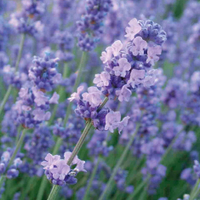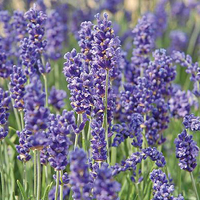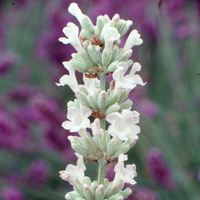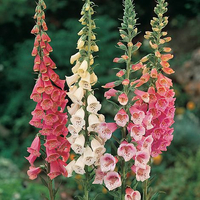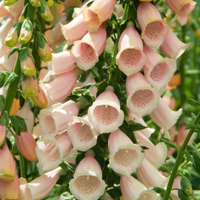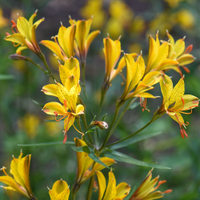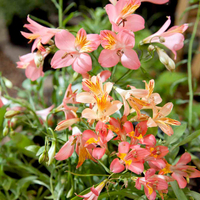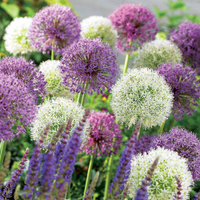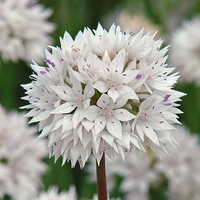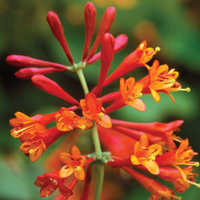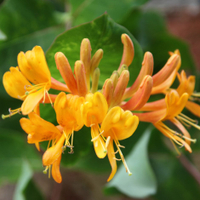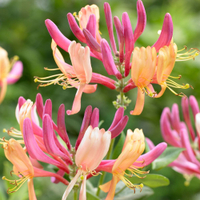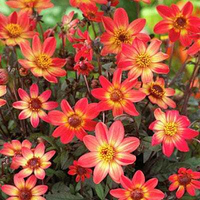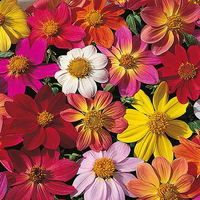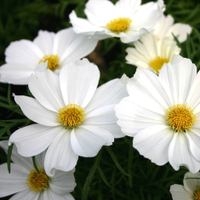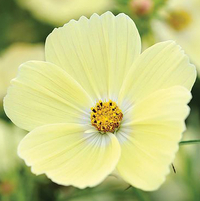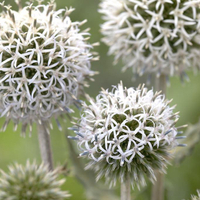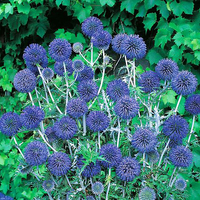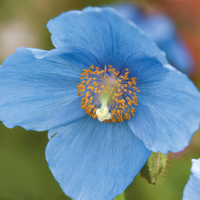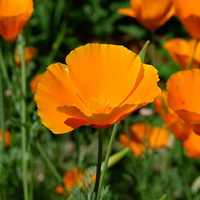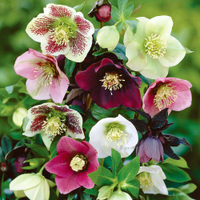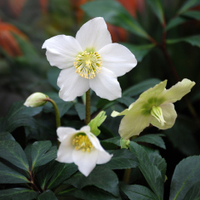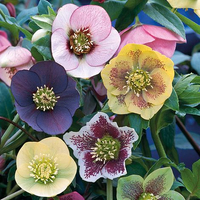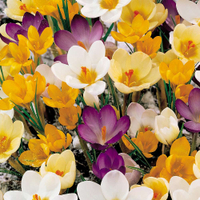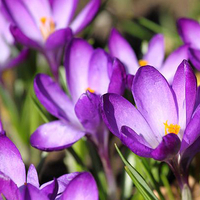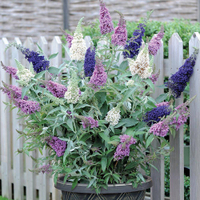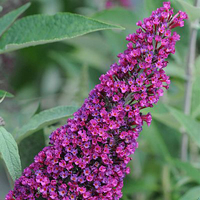Best bee friendly plants: 12 beautiful ideas to try in your garden
Discover the best bee friendly plants to attract bees and other pollinators to your garden. Just a few thoughtful choices will create a wildlife haven full of colour and interest
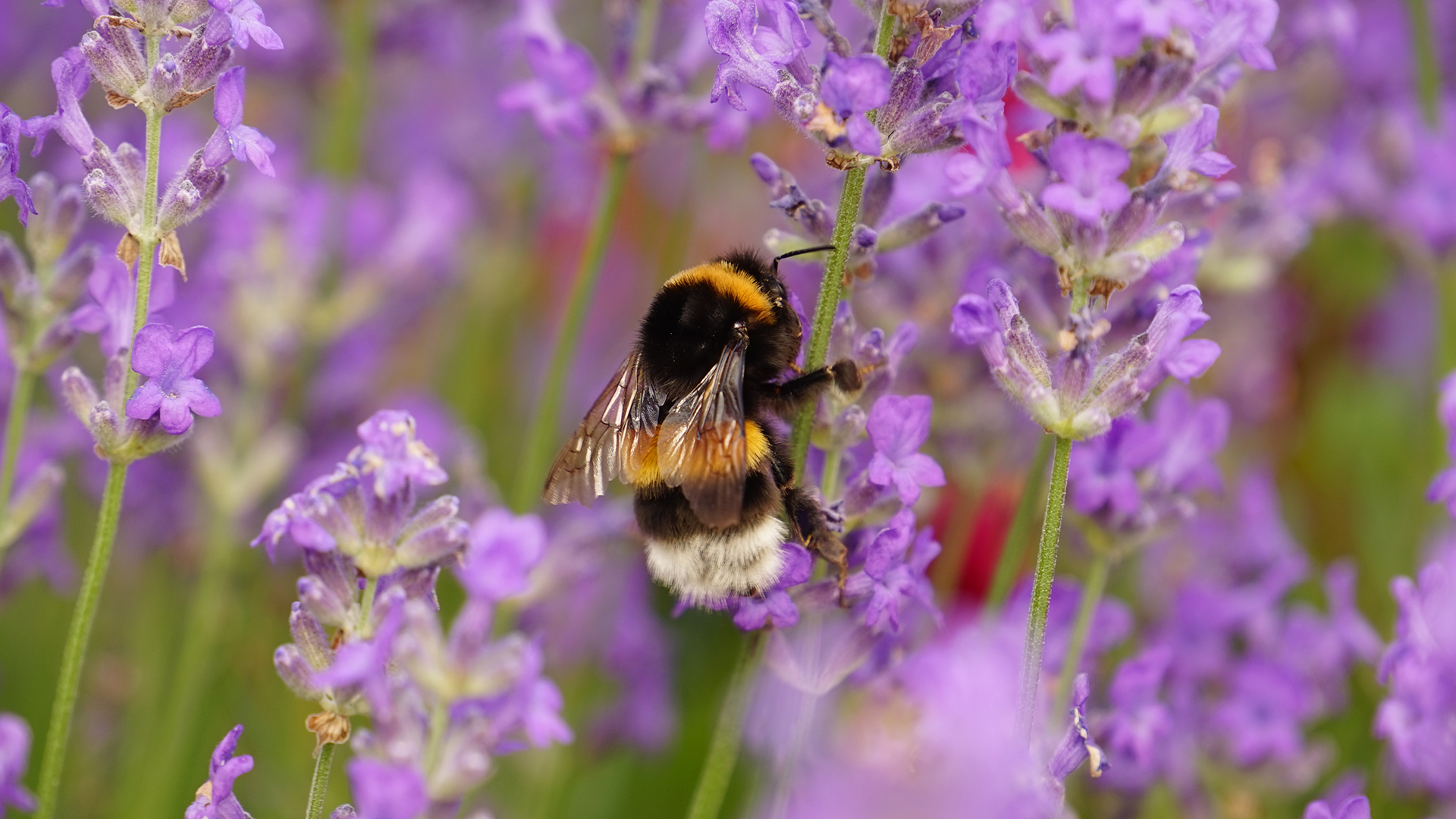

Using bee friendly plants and flowers in your garden to attract bees and other precious pollinators is the most important thing you can do to help wildlife. Over the last century, most natural wildflower meadows have been lost, so gardeners have an essential part to play in securing their future.
Many of us focus our gardening efforts on the summer months, but due to climate change, there are often bees actively seeking food well into autumn, and even winter. Aim to have something in bloom in every season to ensure a constant supply of pollen and nectar.
Don’t forget that bee-friendly plants are loved by other pollinators too, so by planting flowers to attract bees, you’ll also be helping beneficial insects such as moths, hoverflies and butterflies, and in some cases birds and other small animals.
However much or little space you have, you can make an impact, from containers and window boxes tumbling with flowers, to fragrant climbers scrambling up walls, and romantic patches of wildflowers. Start planting now, and soon your garden will be buzzing with bees, butterflies and all other creatures great and small.
Keep scrolling for our pick of the best plants, then head over to our guide to garden borders for more advice on choosing the right plants for your flowerbeds.
1. Lavender
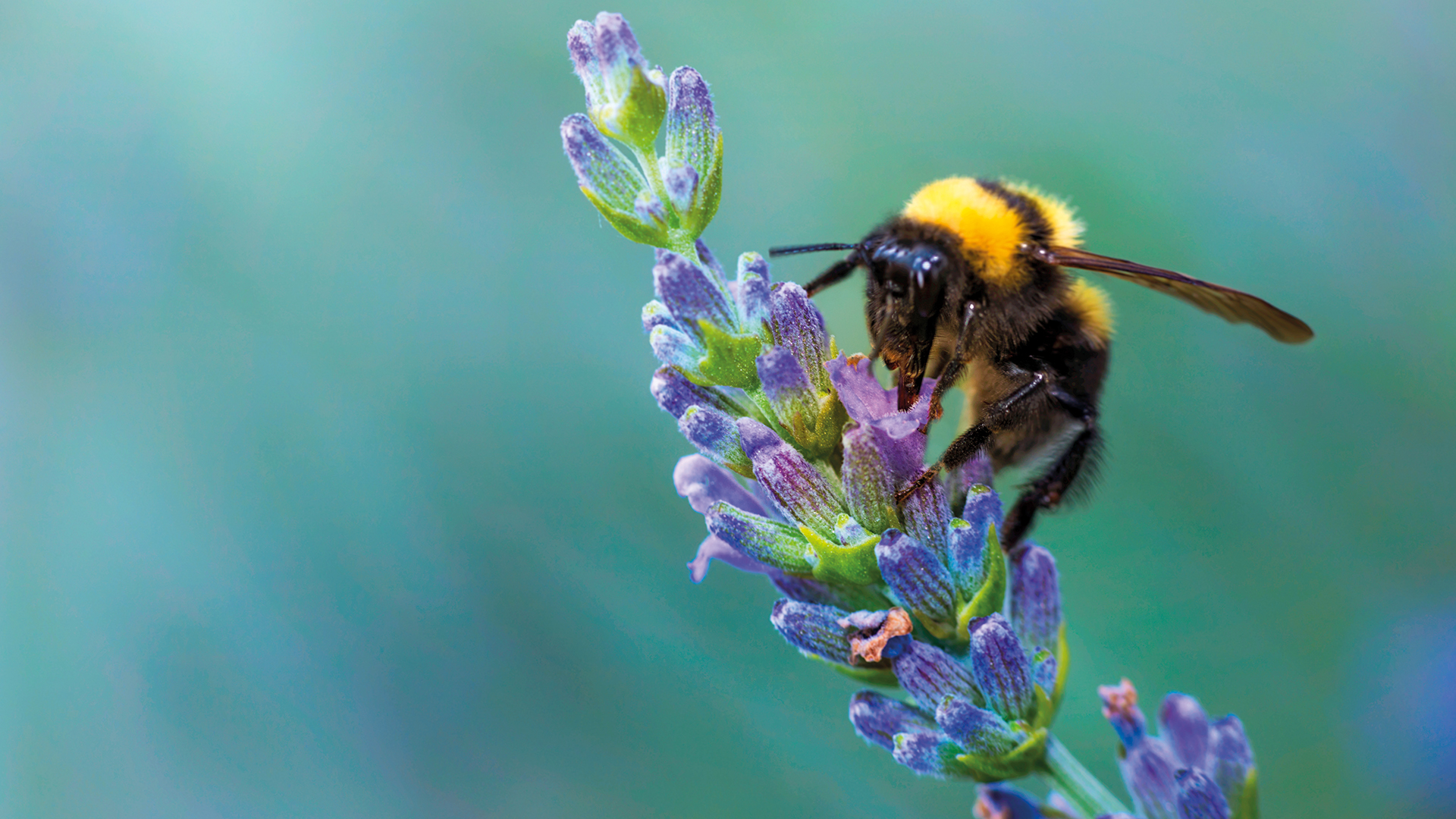
Easy to grow and drought tolerant, with evergreen foliage and a heavenly scent, lavender is prized by pollinators and gardeners alike. Interestingly, bees are drawn to purple flowers, so a few lavender plants dotted around will turn your garden into a hive of activity.
The flowers can be harvested for their fragrance or culinary uses, with Hidcote, Munstead and Lady varieties known for being particularly delectable. To harvest and preserve lavender, simply snip off the stems just before the buds open, tie them together and hang them up for a few weeks until fully dried out.
Where to plant
Lavender is perfect for edging pathways or adding to flower borders and herb gardens, but also makes a striking, aromatic feature in large containers next to seating areas. It needs plenty of sun and fast-draining soil, and prefers less-fertile, drier soil. It won’t flourish in heavy clay.
How to care for lavender
Plant in warmer spring weather after the frosts have passed, then water once or twice a week to help it to bed in. This can soon be reduced down to only occasionally in hot weather, although container plants need more attention.
Once the flowers are spent, you can prune the plant. It’s fine to leave it until after winter. You can cut back lavender fairly hard, but you must retain some green growth as if you take it down to the woody stems, the plant is unlikely to rejuvenate.
Find out how to take lavender cuttings in our guide.
Lavander 'Melissa Lilac' at Crocus
This stunning lilac-coloured lavender is perfect for edging paths and borders. The flowers are larger than many varieties, and the plant blooms from July to September for plenty of late-summer colour.
Lavender 'Hidcote' at Thompson & Morgan
Named after the manor house and garden in Gloucestershire, 'Hidcote' is probably the best-loved English lavender. It's compact, hardy and reliable, and a favourite for culinary use.
Lavender 'Arctic Snow' at Waitrose Garden
For something more unusual, 'Arctic Snow' is a pale and interesting variety that beautifully softens the hot colours often found in late-summer borders. It's also highly aromatic.
2. Foxgloves
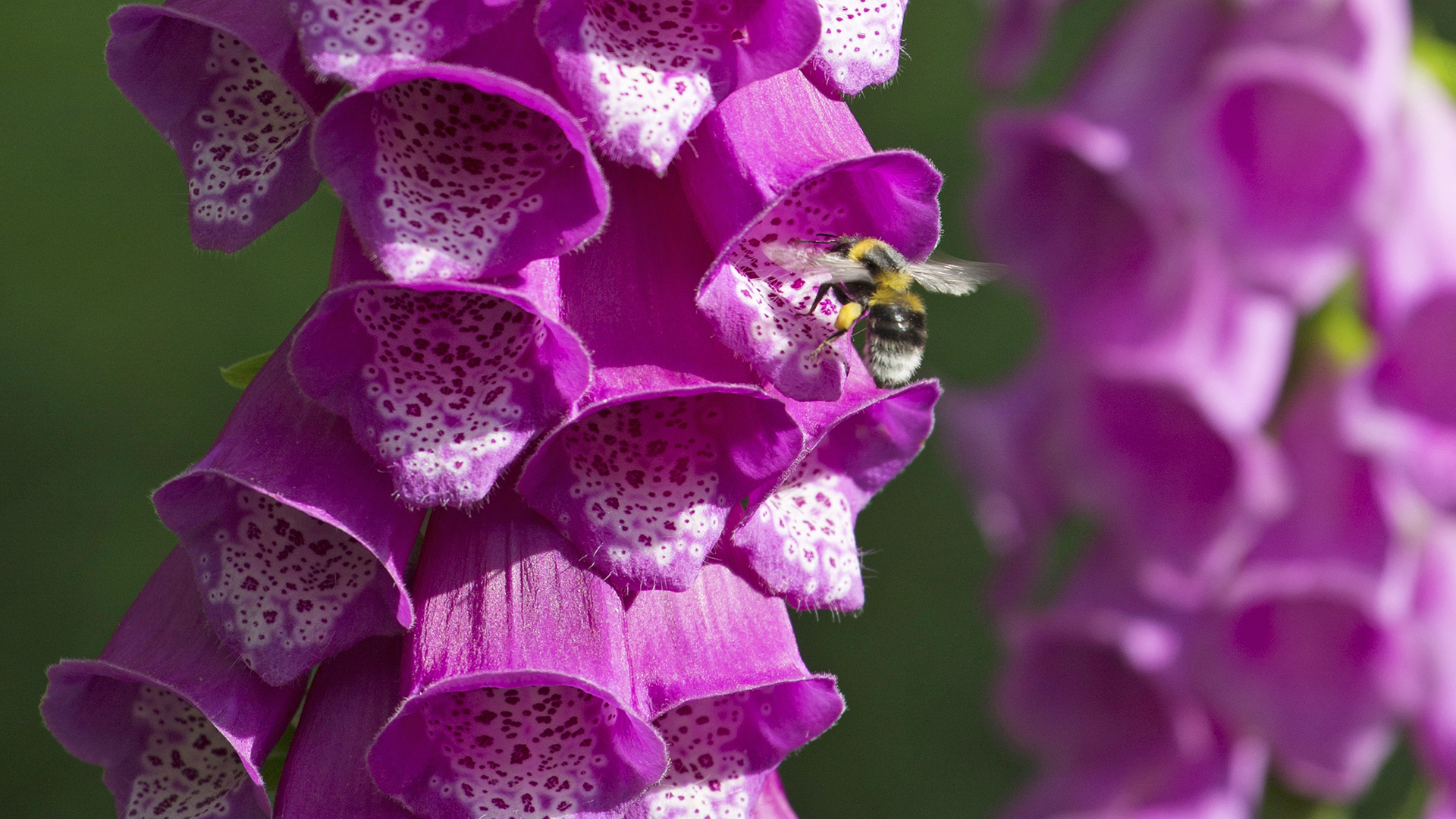
Foxgloves herald the start of summer with bursts of tubular flowers, which make perfect hidey-holes for bees to gather nectar. They are easy to grow from seed, but they won’t be ready to flower until the following year, so if you’re after colour now then you’ll need to invest in plants.
Where to plant
Foxgloves can grow up to two metres tall, depending on the variety, and so are useful for adding pops of colour in the middle or rear of borders. They prefer some shade and a rich, fertile soil, but will grow in most conditions.
Though pollinators love them, foxgloves are poisonous to people and animals when ingested, so don’t plant where pets are prone to nibbling.
How to care for foxgloves
Water regularly, but not excessively as foxgloves don’t like to be waterlogged. Due to their height, the flowers might need staking if they start to lean over. The common foxglove Digitalis purpurea is biennial and will self-seed if not deadheaded, but perennial varieties will come back year after year.
Foxglove 'Excelsior Hybrids' at Thompson & Morgan
With tall pastel spires of mauve, pink, yellow and white, foxglove 'Excelsior Hybrids' will add height and colour to a cottage garden. They also make lovely cut flowers.
Foxglove 'Sutton's Apricot' at Waitrose Garden
Growing your own foxgloves from seed is satisfying and will save a lot of money over buying established plants from garden centres. 'Sutton's Apricot' is a delightful variety that adds height and drama.
3. Alstroemeria
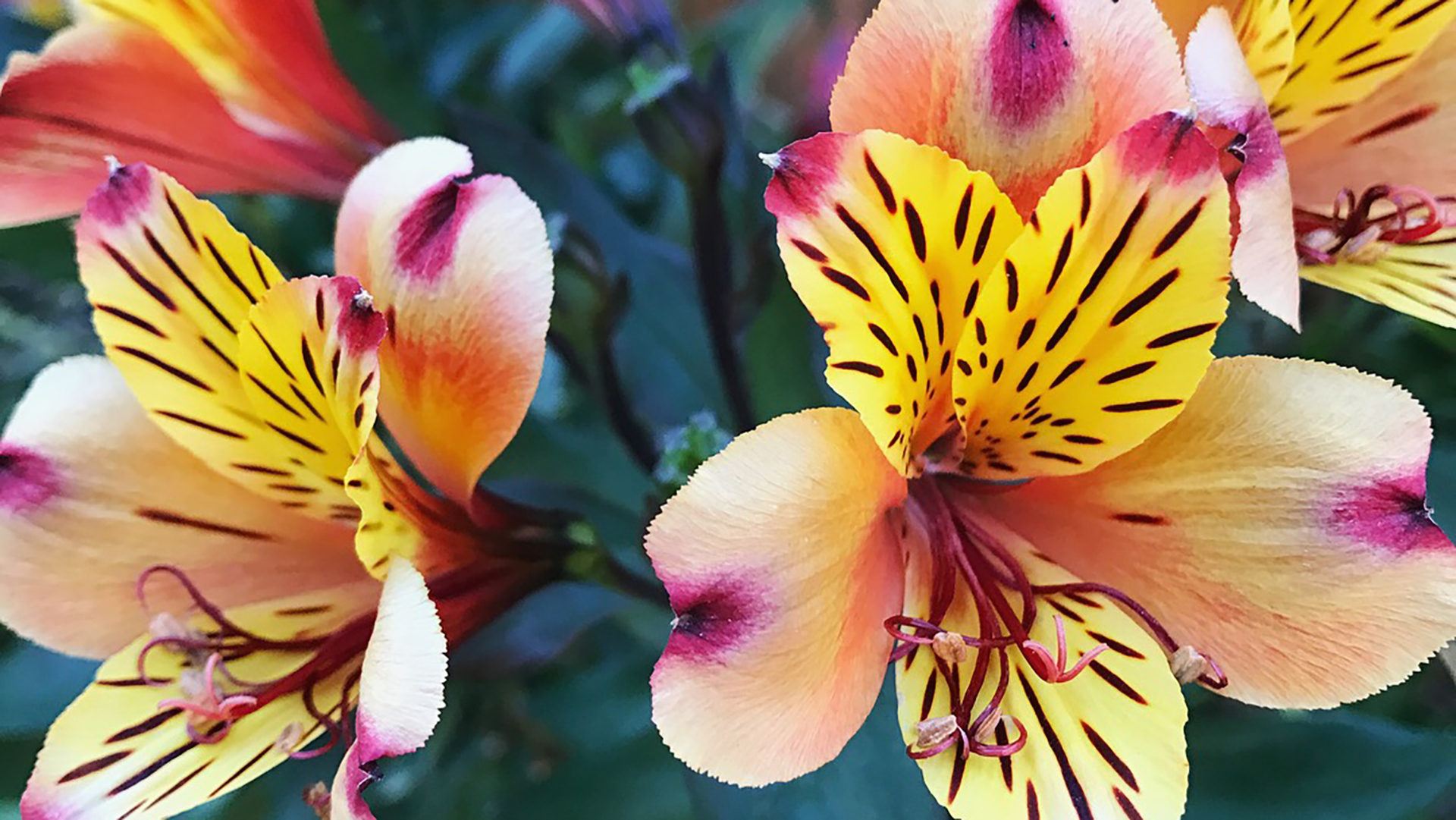
Originating from South America, alstroemerias (also known as Peruvian lilies) are hardy, easy to look after and produce the most stunning flowers year after year. Colours range from delicate whites and pinks through to hot oranges and reds, like this 'Indian Summer' variety.
In addition to attracting beneficial insects, they have a long vase life as a cut flower, lasting up to three weeks. The plant can flower for months with regular dead-heading, so you’ll be in constant supply of these exotic beauties all summer long.
Where to plant
While adding colour to borders, alstroemerias also make good container plants. They prefer fertile, free-draining soil, positioned in ideally full sun or partial shade.
How to care for alstroemerias
Though the plants are hardy, you will get more flowers with regular feeding and watering. Taller varieties will likely need staking. Keep picking the flowers and deadhead by pulling to encourage new blooms. You can propagate alstroemerias by dividing tubers in April.
Alstroemeria 'Sweet Laura' at Van Meuwen
'Sweet Laura' is the first scented Alstroemeria, and has exotic golden yellow petals that make for superb cut flowers. Plant them up in borders or containers for colour all summer long.
Alstroemeria High Society Mix Seeds at Suttons
You can grow your own alstroemeria flowers from seed. The High Society mix offer clusters of pink, rose, yellow and orange flowers that will look fabulous from June until August.
4. Alliums
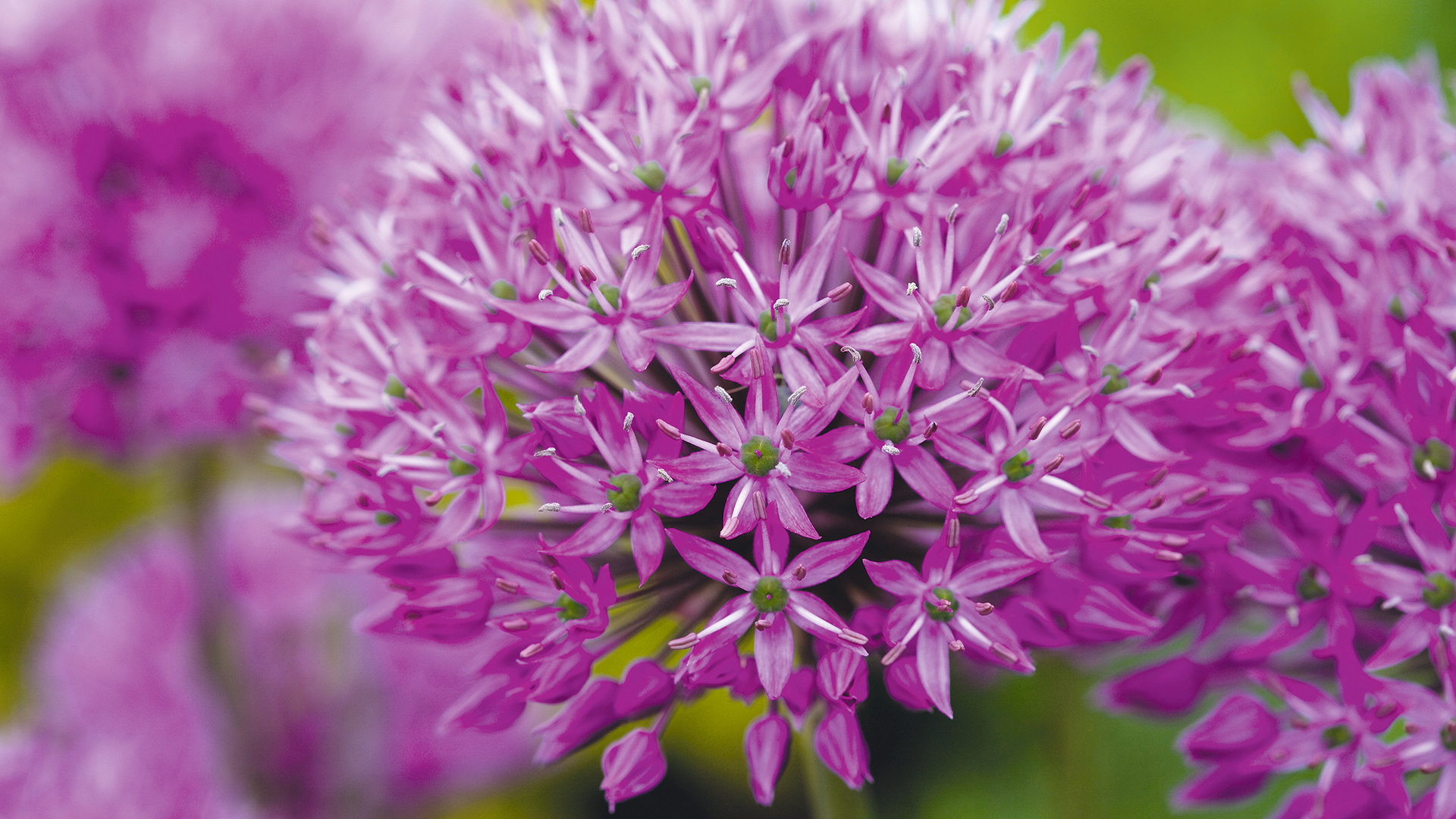
With their large globes bursting with purple to white flowers, alliums are actually ornamental onions, and their foliage may give off a subtle aroma. Their long stems make them excellent cut flowers, and most varieties bloom in early summer. Though similar in form, there are hundreds of different allium varieties, offering myriad colours and sizes.
Alliums beautifully complement a variety of other plants, adding a sculptural contrast to blowsy roses and peonies. Either buy as bulbs to plant out in the autumn, or as spring plants.
Where to plant
Alliums are at their best popping up in the middle of planted areas, adding drama with their height and architectural heads. Smaller varieties are available that can be positioned at the front of borders, and many varieties are well suited to containers.
How to care for alliums
Drought-tolerant and requiring little in the way of feeding, alliums are easy to care for, although container plants will need more regular watering. The bulbs can be left in the ground over winter, but can be divided once the plant has died back.
Allium 'Big Impact Mix' at Van Meuwen
This fantastic allium mix will add height, colour and structure to your border, as well as producing lovely cut flowers. Once they have finished flowering, the seedheads make attractive features.
Allium 'Graceful Beauty' at Thompson & Morgan
This elegant allium grows up to 30cm tall, so is perfect for massing at the front of borders. Hardy and low-maintenance, it likes full sun and will flower from spring to early summer.
5. Honeysuckle
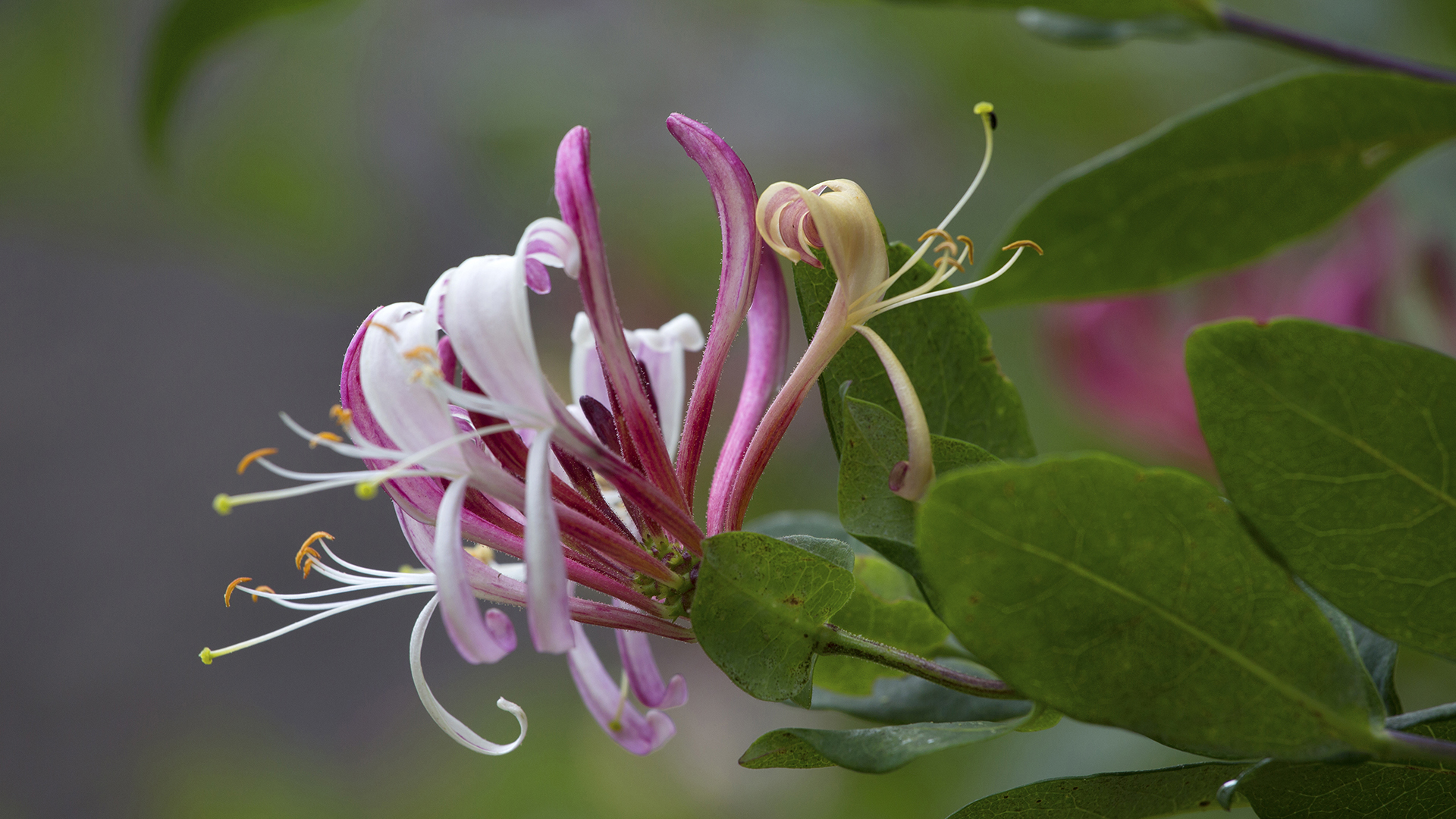
A firm favourite for cottage garden ideas, honeysuckle will add vertical interest by creeping up walls. Many honeysuckles also exude a rich, heady scent that helps to entice pollinating bees. The plant flowers for months, and winds down in autumn with a profusion of berries, which will encourage birds to visit your garden.
Where to plant
Climbing honeysuckle likes its roots to be cool and its flowers in the sun, so a west- or south-west-facing fence or wall is ideal. It favors a rich, well-drained soil and does better in the ground than in a container.
How to care for honeysuckle
Honeysuckle only needs occasional watering in warm weather, and fertilising and mulching once a year. Early-flowering honeysuckle should be pruned after flowering, and late-flowering varieties in the spring. If the plant gets out of control, it can be cut right back in late winter.
Honeysuckle 'Dropmore Scarlet' at Van Meuwen
Laden with fiery red and orange flowers, 'Dropmore Scarlet' will quickly cover walls, fences and pergolas with fabulous colour, often followed by attractive red berries in early autumn.
Honeysuckle Lonicera × tellmanniana at Crocus
Though unscented, this unusual honeysuckle is flush with burnt amber blooms in spring and summer. It makes a stunning backdrop for other hot-coloured flowers.
Honeysuckle 'American Beauty' at Gardening Express
Flowering prolifically from June to September, 'American Beauty' honeysuckle is bursting with peach and pink flowers. It holds the RHS Award of Garden Merit, and grows up to five metres tall.
6. Dahlias
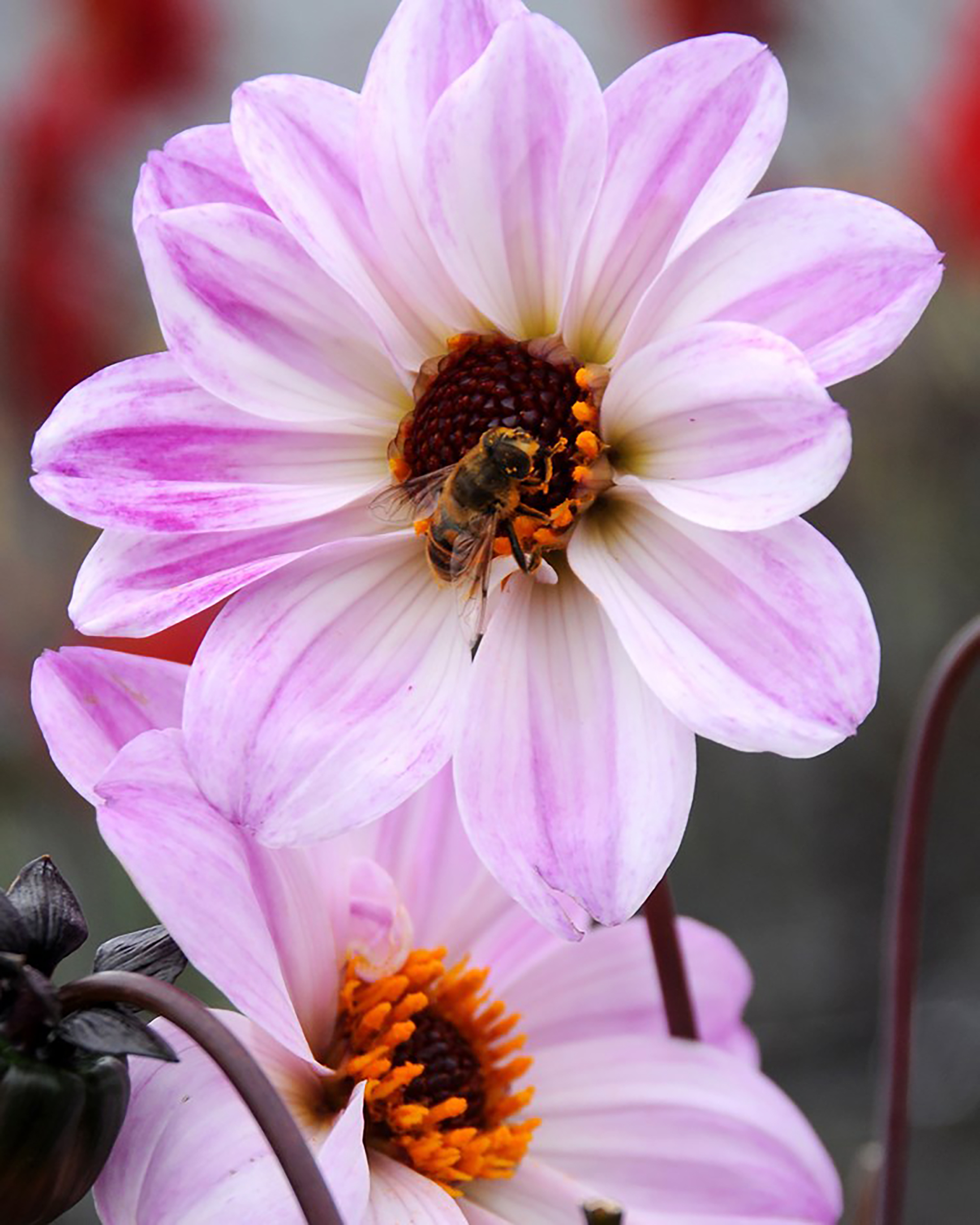
Dahlias are available in many colours and forms – but it is only the single-flowered variety that is beloved of bees, like the beautiful 'Bishop of Leicester'. More complex, heavily petalled dahlias make the pollen and nectar inaccessible, so while you can still include them for their beauty, it’s a good idea to mix them up with single-flowered varieties.
Dahlias make a prolific addition to a cutting garden and tend to come late to the garden party, providing essential colour and food for bees from midsummer to autumn.
Where to plant
Dahlias can be used to add swathes of colour to borders as well as in containers. The plants range in height from 60cm to almost two metres, so do check this when choosing a variety.
Dahlias like sun and don’t like to be crowded, and while they will grow in most soil types they mostly thrive in free-draining soil.
How to care for dahlias
The biggest issue with dahlias is deciding whether to leave the tubers in the ground over winter, or to lift and store them until spring. Many gardeners prefer the low-maintenance regime of leaving them in the ground and mulching with several layers of compost, but you do risk losing them in a very harsh winter.
Dahlias need feeding and watering, and to encourage bushy growth and maximum flowers you should pinch out the growing shoot just above a set of leaves, and cut back stems, leaving only five.
The flowers can be floppy, so stake while planting for best results.
For more advice, head over to our guide on how to grow dahlias.
With its bronze-flushed foliage and dazzling, yellow-centred, pinkish-orange blooms, the Star Wars dahlia is a force to be reckoned with when it comes to attracting pollinators.
Mixed dahlia seeds at Thompson & Morgan
Grow a vibrant mix of dahlias from seed with this selection of single-flowered varieties that are so beloved of bees. Plus, the flowers are edible if you're feeling brave.
7. Cosmos
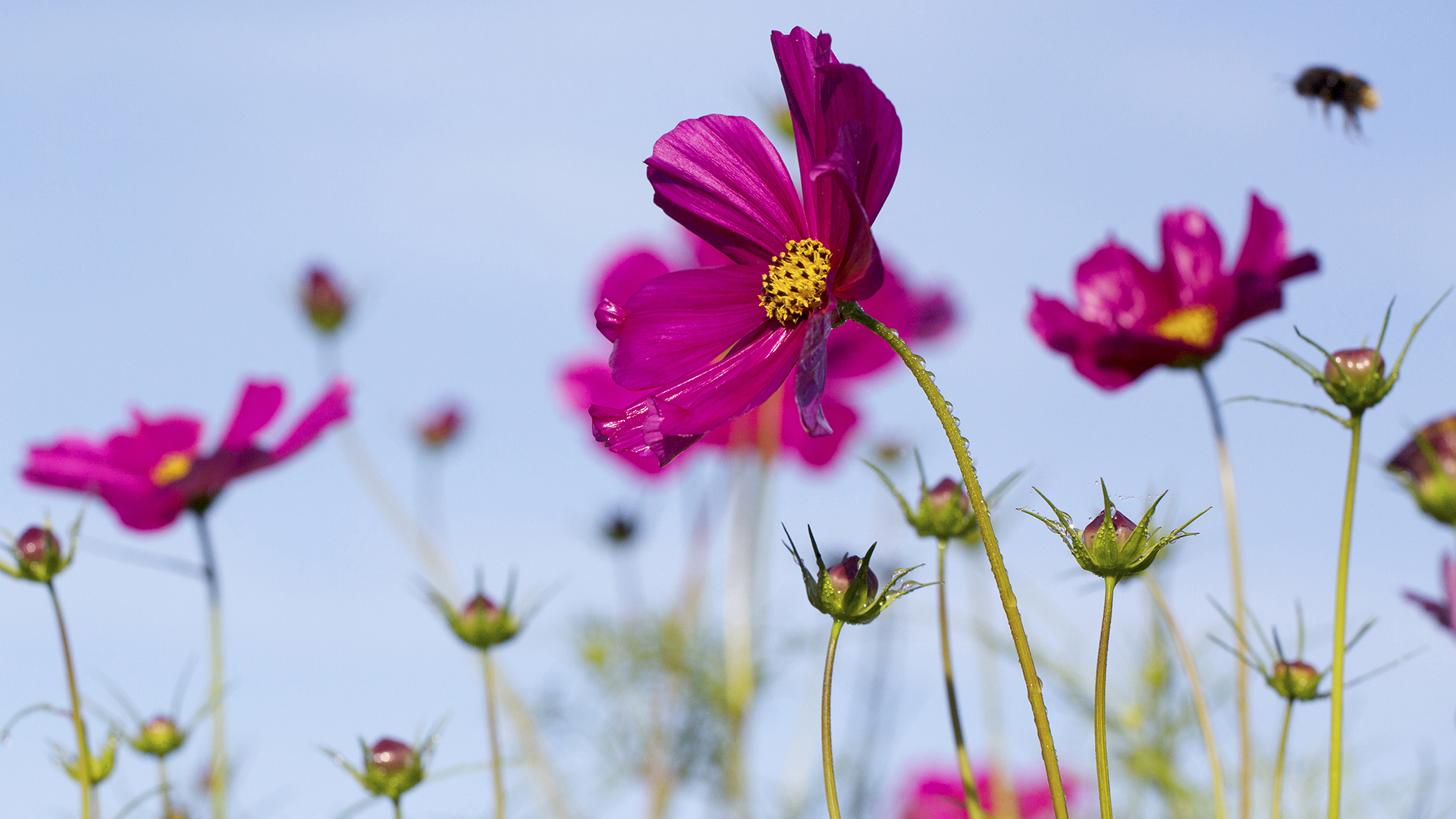
Captivating both bees and butterflies, cosmos are easy to grow from seed and produce an abundance of daisy-like blooms that make lovely cut flowers. Typically seen in numerous shades of pink, cosmos are also available in pure white and yellow.
Where to plant
Half-hardy annuals, cosmos are started off under cover in a greenhouse or propagator, and planted out only when the risk of frost has passed. If you don’t want to grow them from seed, you can buy them as bedding plants.
Taller varieties are great for filling gaps in borders, with shorter cosmos suitable for containers, so add them wherever you want to inject a romantic profusion of colour. They like full sun and light, well-draining soil that isn’t too rich.
How to care for cosmos
For maximum blooms, water and deadhead regularly. If not deadheaded, they may self-seed. Taller plants may need staking.
Cosmos 'Purity' seeds at Crocus
This elegant variety would look lovely in any cut flower arrangement and blooms in long succession from early summer to mid autumn. Growing from seed is much cheaper than buying plants.
Cosmos 'Lemonade' at Thompson & Morgan
This pretty, cheery cosmos flowers just 10 weeks after sowing. It's perfect for pots and borders, and also looks stunning in a vase. Bred to be shorter than other varieties, it blooms all summer.
8. Echinops
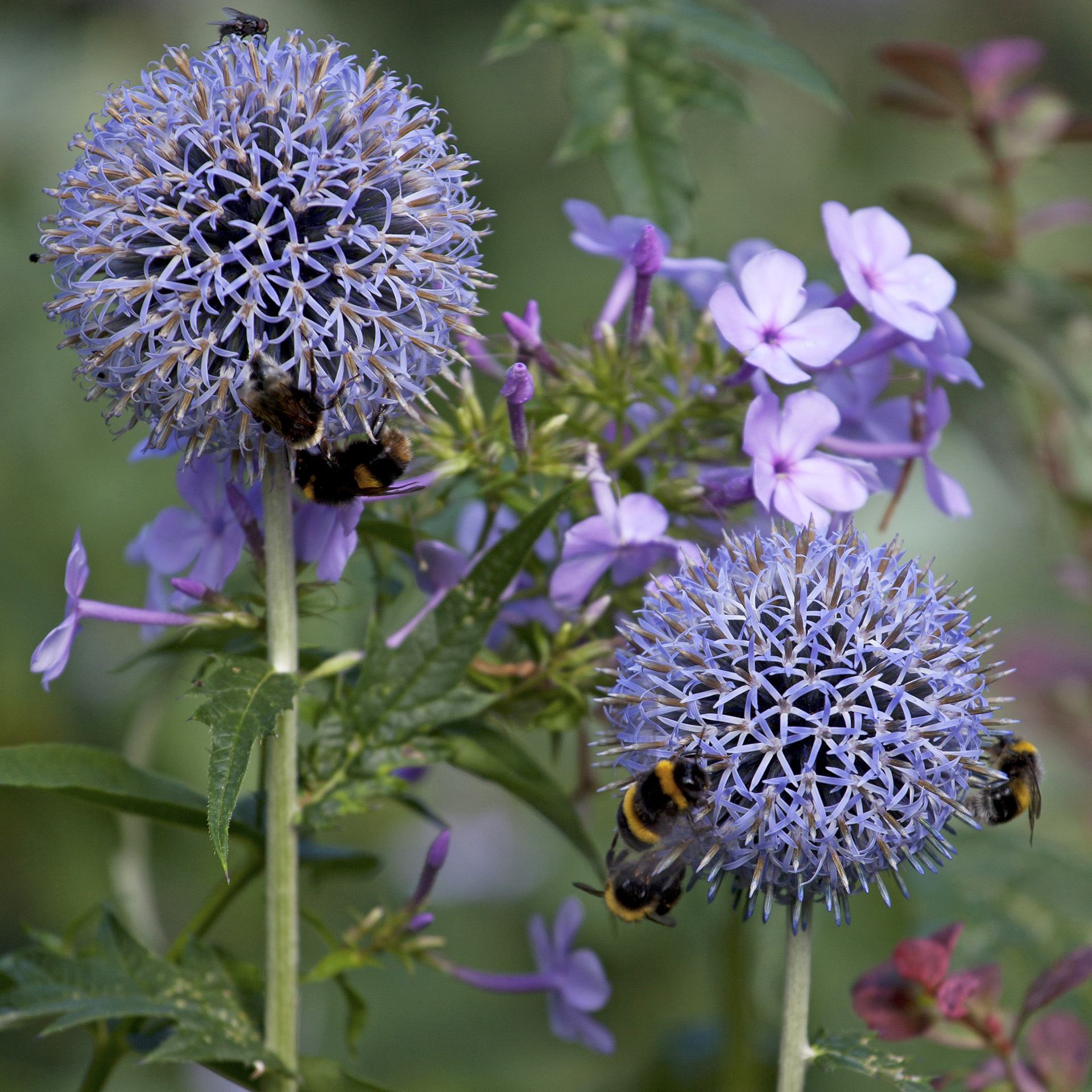
Also known as globe thistles, echinops are a magnet for bees and butterflies, and add colour and structure to gardens in late summer, with their bobbing pom-pom heads. The plants are hardy perennials, so will come back year after year. After flowering they develop striking seed heads, which if not removed will self-seed.
Where to plant
Echinops can grow to over a metre high, so work well popping up at the rear or middle of borders. They appreciate any soil type as long as it’s not too wet, and like full sun, but will grow in partial shade. Sow from seed in spring or buy as plants.
How to care for echinops
After flowering, simply cut down to the ground to encourage a second flush of blooms. Dead-head to prevent self-seeding. If plants become crowded, divide in spring or autumn.
Echinops 'Arctic Glow' at Gardening Express
With thistle-like, silvery-white flower heads on red stems, this is a uniquely beautiful variety. A hardy perennial, 'Arctic Glow' will attract lots of bees and makes lovely dried flowers.
Echinops ritro subsp. ruthenicus seeds at Thompson & Morgan
With clusters of deep blue flowers that reveal a subtle silvery shimmer, these echinops are a striking feature both in and out of bloom. Sow the seeds in a sunny spot.
9. Poppies
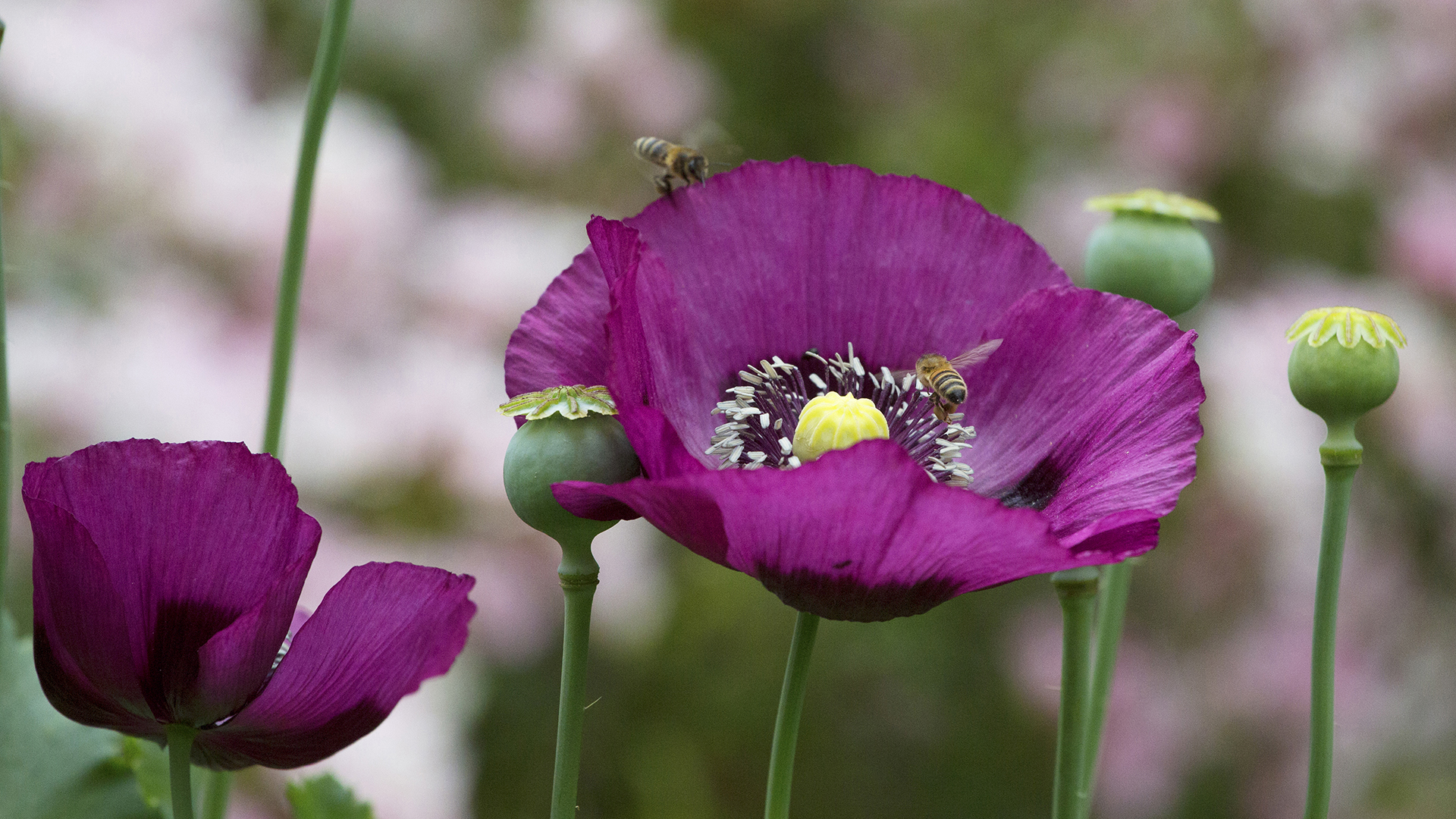
A fantastic source of pollen, poppies add blankets of warm colour to gardens in late-spring. Most species will self-seed, and thus return year after year with their beautiful drifts of delicate petals. Perennial oriental varieties make a particularly striking feature, while annual meadow species are ideal for wild areas and cottage gardens. This 'Dark Plum' opium poppy is a hardy annual.
The common field poppy (papaver rhoeas) is easy to grow, and is an iconic symbol of remembrance for soldiers; it's often included in wildflower mixes.
Where to plant
Poppies are tolerant of most soil types. They can be grown in containers, but will thrive better in the ground. Plant perennial oriental varieties in borders (they can be bought as plants or seeds) and sow wild poppies in meadow areas in autumn or spring, where they can be allowed to freely self-seed.
When positioning, bear in mind that poppies are poisonous to people and pets.
How to care for poppies
Annual poppies need minimal attention. Once they have died, you can simply pull them up and compost the plants – giving them a shake on the way to help transplant more seeds.
Perennial oriental poppies need to be deadheaded to encourage a second flush of flowers, and to prevent them from going to seed. Cut back in autumn and mulch the ground. Taller poppies may need staking.
Menoconopsis 'Lingholm' poppy at Van Meuwen
As rare as it is beautiful, Meconopsis – also known as the Himalayan Blue poppy – is a huge draw for bees. However, it needs the right conditions to grow, thriving in moist, slightly acidic soil with plenty of shade.
Californian Poppy 'Sun Shades' at Thompson & Morgan
A hardy annual, the Californian poppy makes a bold display and flourishes in poor, dry soils. Easy to grow from seed, the flowers will self-seed in natural drifts if left to their own devices.
10. Hellebores
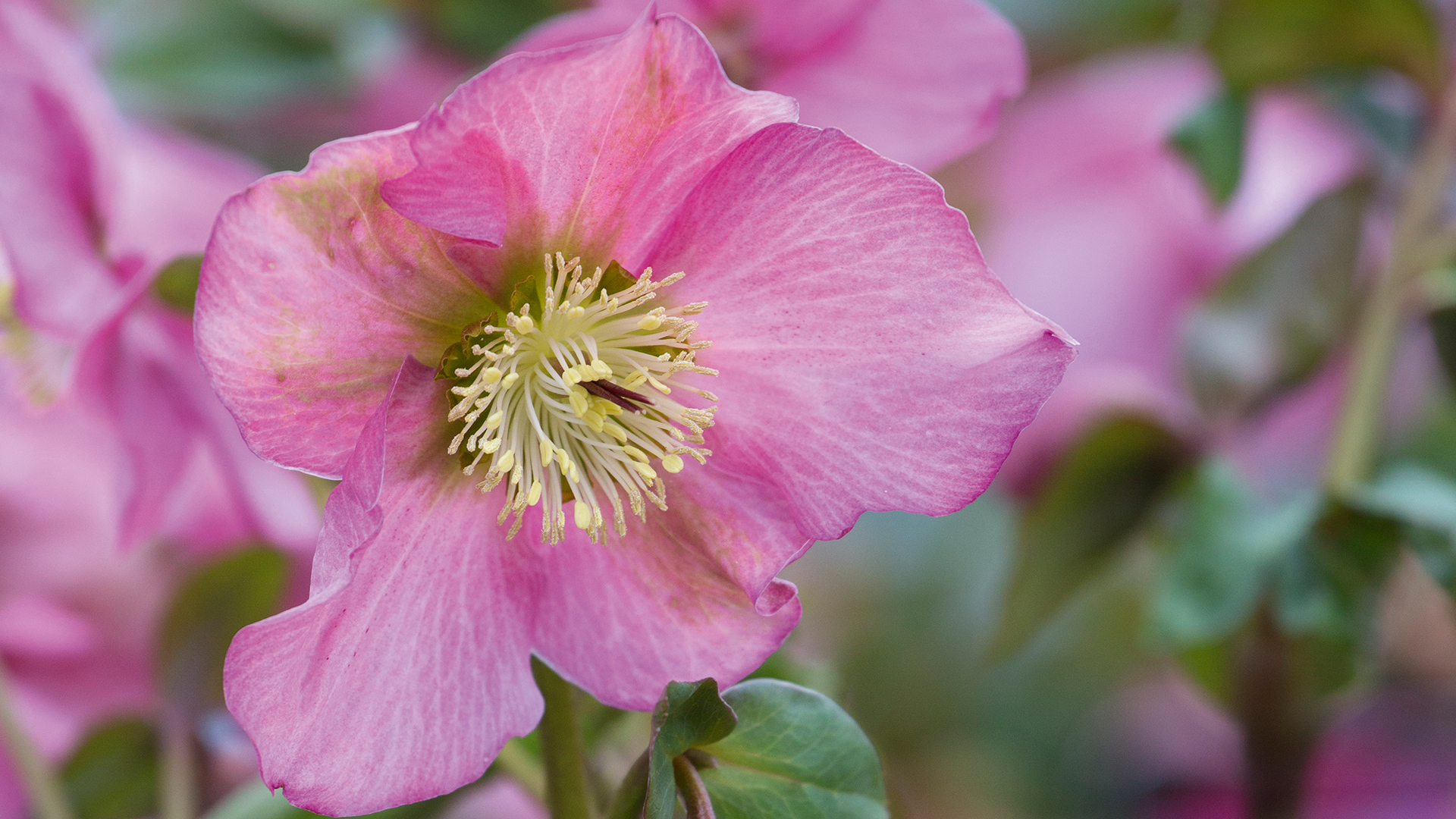
Hellebores, available from Waitrose Garden
Add interest to your garden in winter and early spring, and provide food for pollinators in the scarcest months, by learning how to grow hellebores and dotting them around your borders. These low-maintenance plants are hardy, and a wide spectrum of colours are available.
Where to plant
Most hellebores prefer light shade and rich soil, although there are exceptions so do check the details. They make lovely displays in containers, but those in borders will die back in early spring to make way for other plants to flourish. They are not tall plants, so position where you will be able to see and enjoy them.
How to care for hellebores
Mulching will provide the majority of necessary nutrients, so there’s no need to feed unless the plant is suffering from poor growth – although container plants will require extra care. Cut flowers away in spring once the plant has died back, then remove dead or dying leaves in the winter.
Hellebore 'Mixed' (Lenten Rose) at Van Meuwen
This mix of plain and freckled hellebores makes a stunning addition to borders and containers, blooming in late winter and early spring. A great option for shady gardens.
Helleborus niger Christmas rose at Crocus
Flowering in January and February, this stunning white hellebore occasionally reveals flushes of pink. It's low-growing and adored by bees and other pollinators.
Hellebore 'Winter Flowering Hybrid Mix Improved' at Thompson & Morgan
Grow your own hellebores from seed to achieve an array of colours, from lime green to appleblossom pink and maroon. These will flower from January, even popping up through the snow.
11. Crocus
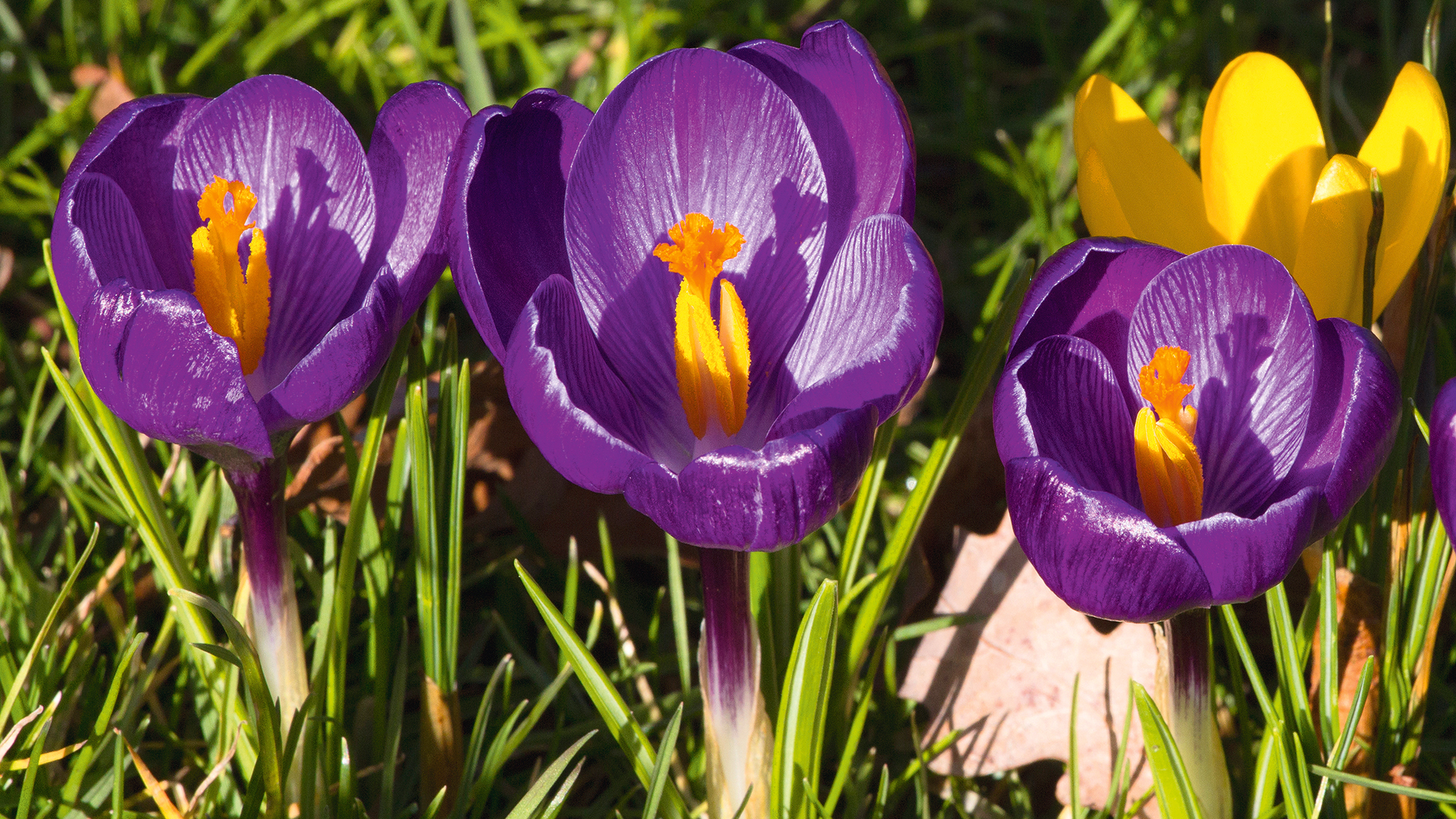
Offering a carpet of colour in spring or autumn, with winter-flowering varieties also available, the crocus is a versatile bulb flower, offering support to pollinators in months where food is in shorter supply.
Where to plant
Bulbs can be planted en masse in lawns and borders, as well as in containers, so you can create a feast for the eyes as well as for the bees. Most varieties need plenty of sun and free-draining soil.
How to care for crocuses
They need little attention, and once established will grow in number. You can help them multiply by dividing clumps.
Crocus 'Winter Flowering' at Van Meuwen
In stunning shades of saffron, white and purple, these hardy crocus bulbs will multiply and bloom year after year, providing much-needed colour in the garden and food for pollinators in late winter.
Crocus 'Ruby Giant' at Thompson & Morgan
Blooming from as early as February, Ruby Giant is a weather-resistant variety that can be easily naturalised in grass, making a fabulous display of large purple flowers to attract bees.
12. Buddleja
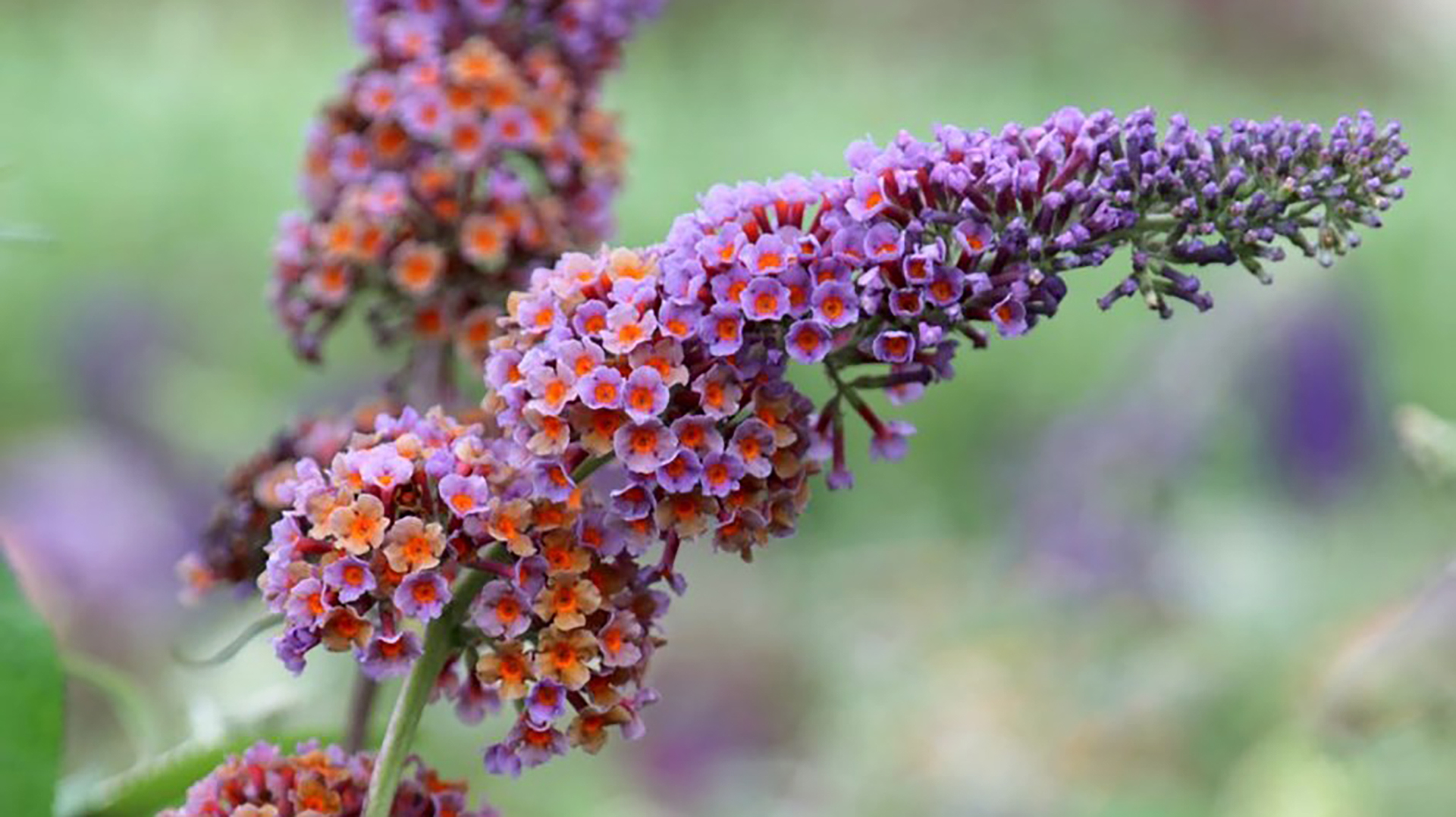
Buddleja, available from Waitrose Garden
With nectar-rich flowers in summer and autumn, buddleja is very attractive to bees. It’s also known as the ‘butterfly bush’ as they are drawn to it like a magnet. With tubular spikes of fragrant blooms in a wide range of stunning colours, buddlejas make good cut flowers. However, some varieties can be invasive so check the final size.
This 'Bicolor' buddleja features stunning purple flowers which open to reveal pink and orange centres.
Where to plant
The fast-growing deciduous shrub grows in most soils, in sun to part shade. Smaller varieties are suitable for containers.
How to care for buddlejas
Deadhead to remove faded blooms, water occasionally and prune hard in late winter to prevent it from becoming twiggy.
Buddleja 'Buzz 3 in 1' at Van Meuwen
This perfectly blended mix of three colours will provide fantastic clusters of honey-scented flowers from June until October that are highly attractive to butterflies and bees. Ideal for a patio container.
Buddleja 'Buzz Velvet' at Thompson & Morgan
This dwarf buddleja won't take over your garden, though while the plant is small, the flowers are standard size. Bees and butterflies will come flocking to 'Buzz Velvet', which flowers from summer to autumn.
More plants ideas to try:
- Find a plant for spaces that don't get much sun with the best shade-loving plants
- Wildlife garden ideas: attract creatures great and small to your space
- Create an eco friendly garden with our top tips
